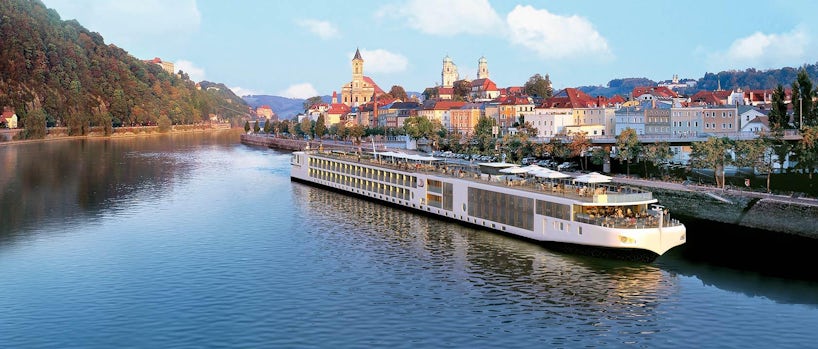
10 Insights to Make the Most Out of Your First River Cruise


New to river cruising? Fear not, we have it covered! Our experts reveal their pro tips and know-how on how to ensure your first river cruise is a wonderful experience – whether that's what to pack, how to choose a cabin, or when and where to go – our guide answers the most frequently asked questions to ensure you have a smooth sailing.
1. How to Pick Your First River Cruise

The two most popular rivers are the sections of the Rhine and the Danube running through Germany and Austria. Steeped in history, and lined by medieval villages, castles and vineyards, they're ideal for first-timers and provide a wonderful introduction to river cruising. Viking is the largest river cruise line, representing 50 percent of the North American market, and the majority of its Viking Longships -- the name given to its elegant Scandinavian-style vessels -- can be found on the Rhine and Danube.
Food and drink lovers should consider the Seine, Rhone and Saone, with sailings through world-famous French wine-growing regions, or the Portuguese Douro with visits to port wine lodges. Also, as ships only sail during the day on the Douro you never miss any of the passing countryside. If you're an active adventurer take a look at an exotic cruise on Egypt's Nile or the Mekong or Ganges in Asia.
2. When is the Best Time of Year to Go on a River Cruise?

The European river cruise season runs from late March through November. There are also special festive market sailings in December during Christmas and New Year breaks, which pass through a series of German and Austrian towns, most of which have Christmas Markets – complete with Gluwein and stollen, amongst many other seasonal goodies.
Spring and fall sailings avoid the peak summertime crowds -- the hottest and busiest time of year -- as well as offering good-value fares. April to October is the main season for Asia cruises. Nile sailings operate year-round (except for June and July), with the best months being October to May when it's not too hot.
3. How to Choose a Cabin on Your River Cruise

All staterooms face the water and there are no inside cabins. There's no "best side" on river ships as vessels sail close to banks and you will always have something to see. If there's a passing landmark, such as the Lorelei Rock on the Rhine, there will be an announcement. If your cabin is on the other side you can easily go to the lounge or sun deck for the best views.

The main decision is whether you want a balcony. To clarify river cruise terminology, a French balcony is where you can lower a floor-to-ceiling window halfway so you can look out but not step out (on Viking Longships, a French Balcony is a floor-to-ceiling sliding glass door that opens to allow fresh air and views of the passing villages). A balcony or veranda means you can sit outside. The most budget-friendly cabins are on the lower deck and have fixed windows. Factors to consider include how much time you will spend on the veranda. For example, on Christmas market cruises you're unlikely to use one. Some riverboats have suites and if you want a separate bedroom and lounge Viking's 445-square-foot Explorer Suites (pictured above) are proper two-room suites and have large wraparound balconies.
4. What to Pack For Your River Cruise

Life on a river cruise is relaxed and informal with no strict dress codes or formal nights. Pack casual clothing and take layers, particularly in Europe where weather can be changeable. In the evening "smart casual" is the norm. The most essential items are comfortable shoes as you will be doing far more walking than on an ocean sailing. To help you pack light, all lines offer a laundry and pressing service and Viking even has umbrellas in your wardrobe.
Take an adapter for your electrical devices. Viking helpfully provides both U.S. and European-style sockets in staterooms on its Longships, along with USB ports. Other thoughtful touches include umbrellas. You also don't need to take a lot of cash on a river cruise as bar bills, gratuities and other extras are added to the final onboard account which can be settled by credit card.
5. What's Included on a River Cruise?

River cruises have a high number of inclusions, making vacation budgeting easy. Fares cover all meals and most lines provide complimentary beer, wine and soft beverages with lunch and dinner. Viking offers the option to upgrade to a Silver Spirits package covering bar drinks and premium wines. Ships have 24-hour self-serve tea and coffee stations with cookies and snacks.
Most lines offer daily excursions and companies such as Viking offers an "Included" excursion in each port, while also grading shore tours according to difficulty level to ensure there's something for everyone. The line also offers exclusive access during its "Privileged Access" excursions such as a private music recital in a palace or after-hours museum visit. Back onboard, free Wi-Fi is standard.
6. Is There Entertainment on a River Cruise?

Entertainment on river ships is low key. This is because there are no “sea days” with hours to fill and no space to accommodate a theater or big production show. On a river you will visit different destinations every day -- sometimes two -- and after sightseeing most passengers are ready for an early night.
All ships have a resident pianist or musical duo that play in the lounge next to a dance floor. Lines such as Viking also bring visiting entertainers onboard, including local folk dancers and bands, and also organize art and craft classes, cooking demos, wine tasting and trivia quizzes.
7. What Happens at Mealtimes on a River Cruise?

Breakfast, lunch and dinner are predominantly offered on a single-sitting open-seating basis so you can sit where you want and with whom you want. You will find after a day or two that people will gravitate to the same tables, but part of the fun with a river cruise is you'll get to know most of your fellow guests after a day or two, so don't be afraid to mix it up. Breakfast and lunch tend to be a mix of buffet and cooked-to-order items with an a la carte served dinner. An early bird breakfast and lighter lunch options are available in the lounge.
One of the lovely things about a river cruise is much of the produce is sourced locally, including the wines, which are thoughtfully paired with the cuisine. So for example, when you are sailing in the Alsace region, expect wines from local vineyards; the same would apply to the Douro River, for example, where you'll also sample ports.
Some ships have second smaller restaurants offering casual or fine dining; and on Viking Longships you can also enjoy meals al fresco on the Aquavit Terrace, pictured above.
8. What's it Like for Solo Travelers on a River Cruise?

A river cruise is one of the best vacations for solo travelers. With small-size ships, a friendly onboard atmosphere, and a cruise director taking care of arrangements every step of the way, you will never feel alone. Ships typically carry fewer than 200 passengers -- sometimes less including fewer than 100 on Viking’s ships sailing in Egypt and Asia -- so you'll quickly get to know fellow shipmates and make new friends. Some lines have single cabins and offer dedicated cruises for solos with no single supplement, while others offer special solo traveler fares on select cruises.
9. Cruising With Limited Mobility on a River Cruise

If you use a wheelchair or have limited mobility choose an itinerary with plenty of cruising time to admire the scenery from the ship. Top options include the Rhine and Danube -- with highlights such as the UNESCO-listed Middle Rhine and Wachau valleys -- rather than French cruises with shorter sailing distances between ports.
Viking offers the 14-night Grand European Tour between Amsterdam and Budapest that provides a leisurely way of visiting four countries with plenty of beautiful scenery along the way. Wheelchair users must be accompanied by someone who can help with their embarkation and disembarkation, which can sometimes involve crossing over vessels that are moored together. Ships allow collapsible wheelchairs although motorized scooters cannot be accommodated.
10. Will I Get Motion Sickness on a River Cruise?

The short answer is no -- the movement on rivers is virtually non-existent -- in fact, it's hard to tell if you're moving without looking out of the window – so you'll never get sea- or, rather, riversick.